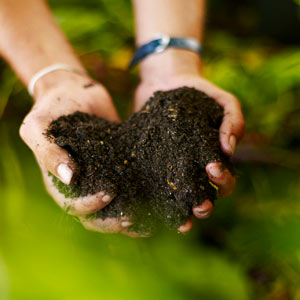 For months after teaching Julia Roberts how to compost on Oprah, people would occasionally recognize me as the “worm lady” because of the little issue we had on air with the worms escaping. Since then I have tried almost every conceivable compost bin on the market, (much to my husband’s chagrin,) and I have some findings to share with you. I have to point out that I have a small backyard, so these “experimental” bins were total eyesores. My husband put his foot down in the Spring when it got warm enough to eat outside – he’s got a point as a the worm bin in particular, wasn’t the most appetizing thing to look at while eating one’s dinner.
For months after teaching Julia Roberts how to compost on Oprah, people would occasionally recognize me as the “worm lady” because of the little issue we had on air with the worms escaping. Since then I have tried almost every conceivable compost bin on the market, (much to my husband’s chagrin,) and I have some findings to share with you. I have to point out that I have a small backyard, so these “experimental” bins were total eyesores. My husband put his foot down in the Spring when it got warm enough to eat outside – he’s got a point as a the worm bin in particular, wasn’t the most appetizing thing to look at while eating one’s dinner.
So now that most of them have been forcibly removed, I’m left with my trusty two – the only ones that have continuously worked for me for two or three seasons. The “terrible two,” have been cleverly concealed behind a small fence, so no one has to be offended anymore! Admittedly, it does take a bit of commitment to schlepp down to the end of the yard a few times a week to empty my compost crock, but the incredible fertilizer that they produce at the Season’s end, makes it worthwhile.
The most satisfying thing about composting is the amount of trash that is diverted from my under-the-sink trash can. Seven days of 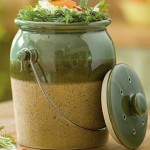 mainly veggie lunches and dinners, produces a mega amount of vegetable scraps. Add all the tea bags, egg shells, coffee grounds and ends of bread, and you’ve got a pile of trash to get rid off. I get to feel so virtuous as I dump it into my counter top crock, knowing it’s going to good use.
mainly veggie lunches and dinners, produces a mega amount of vegetable scraps. Add all the tea bags, egg shells, coffee grounds and ends of bread, and you’ve got a pile of trash to get rid off. I get to feel so virtuous as I dump it into my counter top crock, knowing it’s going to good use.
So the two bins that I like are:
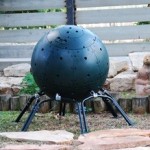 The Ecomposter: Love this bin with a passion. I wasn’t sure about it for the first few months because it’s so weird-looking (husband totally appalled,) and it’s also pricey, however, I was lucky enough to get given one to try and the the inventor’s daughter came to my home to assemble it – thank Goodness because there’s a lot of moving parts (be warned.) I love it because it’s the only bin that is 100% rodent-proof. Because we live near a creek, which runs through the city, there’s a lot of hungry and highly unpleasant rats hanging around any kind of food source. If it wasn’t for the Ecomposter, composting would been a thing of the past for me because one night my husband went down to the old bin, and an enormous rat actually jumped out towards his face! The rats don’t come near the Ecomposter because there’s no way they can get into it.
The Ecomposter: Love this bin with a passion. I wasn’t sure about it for the first few months because it’s so weird-looking (husband totally appalled,) and it’s also pricey, however, I was lucky enough to get given one to try and the the inventor’s daughter came to my home to assemble it – thank Goodness because there’s a lot of moving parts (be warned.) I love it because it’s the only bin that is 100% rodent-proof. Because we live near a creek, which runs through the city, there’s a lot of hungry and highly unpleasant rats hanging around any kind of food source. If it wasn’t for the Ecomposter, composting would been a thing of the past for me because one night my husband went down to the old bin, and an enormous rat actually jumped out towards his face! The rats don’t come near the Ecomposter because there’s no way they can get into it.
The other thing I love about this model is that it doubles as a worm bin. Believe me, I’ve tried out quite a few worm bins and the thing I don’t love is that they require quite a lot of tending. Not with the Ecomposter! I didn’t even intend it to be a worm bin, but I threw a couple of worms in from the yard about a year ago and they’ve now multiplied exponentially. Every time I open the bin, I see thousands of them writhing around. So by the time the compost is ready, it will be choc full of worms that I didn’t even have to buy, and my organic yard will be so healthy. There’s also a cheaper version of this compost bin called the CompoSpin 50.
I have a couple of citrus trees, a couple of blueberry bushes and tons of Earth Boxes, all of which produce magnificent produce, which I think is partly due to this incredible fertilizer – all made from old veggie scraps.
The other bin I like is the Garden Gourmet, which is a solid and inexpensive bin. If you don’t have a mega rodent problem, you’ll be just 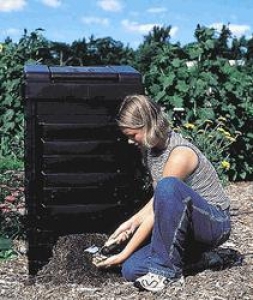 fine with this. I use these bins at my daughter’s school and there is no problem at all. What I like most is that the front has a pull up hatch, so you can begin harvesting the “done” compost from the bottom, before the stuff that you’ve recently dropped into the top is done. The one disadvantage with the Ecomposter and all the barrel bins that you turn, is that you once you’ve filled it, you have to then leave it for a few months, without adding anything new, so that the whole lot will decompose.
fine with this. I use these bins at my daughter’s school and there is no problem at all. What I like most is that the front has a pull up hatch, so you can begin harvesting the “done” compost from the bottom, before the stuff that you’ve recently dropped into the top is done. The one disadvantage with the Ecomposter and all the barrel bins that you turn, is that you once you’ve filled it, you have to then leave it for a few months, without adding anything new, so that the whole lot will decompose.
If you go with the Ecomposter, you may need another bin to use while you let the contents fully decompose. I will say that a year of adding scraps every other day to my Ecomposter, hasn’t even nearly filled it up – it seems like a bottomless pit.
How -To Compost/Composting Tips:
So many of my friends keep saying that they really need to learn how to compost, however, it’s not rocket science. You throw the scraps in and just have to make sure then every now and again you add some dry matter (leaves, grass clippings, sawdust, even paper.) You also need to check every month or so that the pile isn’t getting too dry. The ideal conditions for decomposition are warm and damp. The only other thing you need to do is turn the pile once a month with spade or a garden fork. You can turn the Ecomposter around, as it’s a giant ball, but it gets almost too heavy to do this once it’s half full, so a quick dig around with a spade is actually easier.
Composting is such super-positive eco- action you can take. Even if you live in a city like NYC, you can gather your scraps in a compost crock and take them down to the Union Square Green farmer’s market once a week, where there’s a stall which will gladly put them to good use.
It’s a funny old life, eco friendly lipsticks one day, worm composting the next – all in the name of a good day’s work!

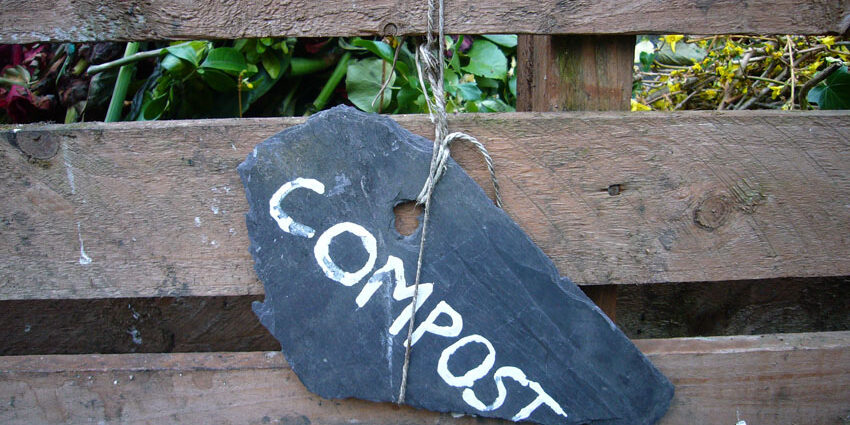



Dear Sophie
I’m Swiss and have ordered your book the other day. Loads of great ideas. Passed it on to my bureau collegue who also likes it a lot.
Do you know about the Bokashi composter? Did you try it? How about composting when you only have a balcony?
Anyway, keep on going, you’re right that it is important that everyone can do little steps to make the world better.
Martina
Gardening really starts in the soil. Thinking about what goes on a microscopic, bacterial level is something most of us rarely think about, but proves time and time again to really affect the quality and abundance that our garden yields. Investing in soil inoculants means investing in the health and fertility of your soil for years to come. I think more people should be aware and this site, http://www.biositechnology.com/, is a great resource to get all garden enthusiasts on a path toward a better and healthier harvest!